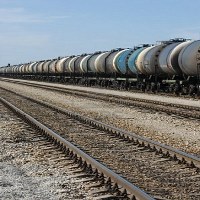“I’m not worried. If push comes to shove, they’ll get the oil to market,” I told my colleague from my seat behind the wheel.
“How do you think they’ll manage that?” he asked.
Looking back, I can understand his skepticism.
Just a few weeks ago, Obama made the politically undecided move to delay TransCanada’s Keystone XL Pipeline project.
Although the main purpose of the 1,980-mile pipeline would have been to ship production from the oil sands, there were plans to add an extension, effectively linking up with Bakken.
This would have shipped an extra 65,000 barrels of oil out of North Dakota on a daily basis.
I smiled and rolled down my window.
A thick odor drifted into the car, and I was struck with a sense of déjà vu from the all-too-familiar smell of oil.
Not two weeks before, we had been driving past one of Syncrude’s massive surface mining operations when the same smell penetrated our senses.
It caught the attention of my passenger, and he immediately looked out my window. I followed his gaze and it became obvious where it was coming from…
About fifty yards off the barren road we were driving on was a set of railroad tracks that stretched far into the horizon.
We had come up on the tail end of the longest line of railroad tankers I’d ever seen.
And the petroleum perfume it was giving off gave us no doubt what those tankers held.
“That’s how…” I replied to his earlier question.
“Will it be enough?”
“There’s one thing we have on our side — money.”
It’s true. If you too had witnessed this line of oil tankers firsthand, all you would have seen were dollar signs.
The problem isn’t money. There is no lack of interest in energy plays like the Bakken.
In fact, more than $480 billion has been spent so far through M&A deals in the energy sector. Here’s a peek at just a few of them:

That’s already much higher than the $418 billion spent last year.
The problem isn’t on the production side, either.
I confessed to my colleague that I had been slightly wrong when I said in September that North Dakota would catapult ahead of Alaska and California’s oil production within five years.
Truth is they’re going to do it next year.
I sensed his doubt at this proclamation, and it was all too easy to make a believer out of him.
The EIA recently reported North Dakota’s oil production in September topped 460,000 barrels per day.

Think about that for a second…
That means within a matter of six years, the state’s production jumped 369%!
Nowhere else will you find that kind of growth story — and it happened in spite of oil prices crashing to under $33 per barrel in December 2008.
During that same period, Alaska’s output fell sharply by 40%. Without a miracle, it will be impossible for the state to reverse that two-decade downward trend.
And California didn’t fare much better.
At this rate, North Dakota will be our second largest oil-producing state by early next year.
By now, you’ve probably guessed that the problem lies with infrastructure…
For starters, my friend was right to ask whether these tankers were enough. Fact is they’re not.
North Dakota hit their maximum pipeline capacity years ago. When my buddy informed me that about 28% of the Bakken oil (roughly 130,000 barrels per day) is shipped via rail, I couldn’t help but offer him a slight correction.
Just a few weeks ago, the Bakken Oil Express departed North Dakota bound for St. James, Louisiana, with about 70,000 barrels of oil in tow.
Soon, they’ll be shipping 100,000 barrels of oil per day. Before you know it, their capacity will reach more than 250,000 barrels per day.
“Maybe you’re right. So what do we do about it?”
That, my friends, is by far the easiest question to answer. Pipelines will be built. More rail capacity will be added. They’re even ready to put a brand-new refinery in place.
And the whole time, we’ll be in the right position to profit from it all…
All the major players like ExxonMobil will be spending billions of dollars over the next few years for their piece of Bakken real estate.
It’s why I put together this new report.
When the Bakken propels North Dakota to the second largest oil-producing state in the U.S., these are the stocks you want to own.
As I explained to my colleague that day, it’s simply a matter of time.
Until next time,

Keith Kohl
Editor, Energy and Capital





